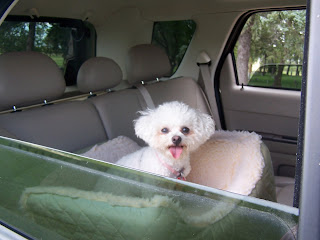 |
| Little dog in a covered wagon |
Tia Judy said we learned about food, clothing, shelter and transportation. We learned about adaptation to the environment, courage in the face of adversity, freedom and opportunity, how the land changed, and about sustainable living, and then interdependent living. We learned about an important part of US history – the Homestead Act and pioneer life. One important thing was missing, though. We did not learn about the land from a Native American perspective, and how pioneer life affected them and their way of life. Amanda wants to be sure to include that when her class studies pioneer life, so that her students can learn how their dreams and actions affect others.
 |
| Little dog on the prairie |
Now that we are home, little dogs like me can run and play outside, and be free to explore our homestead. Tia Judy will read some books, and Amanda is going to be her own kind of pioneer, and will create new ways to make US history come alive for her students!
 |
| Little dog on her lake |







































